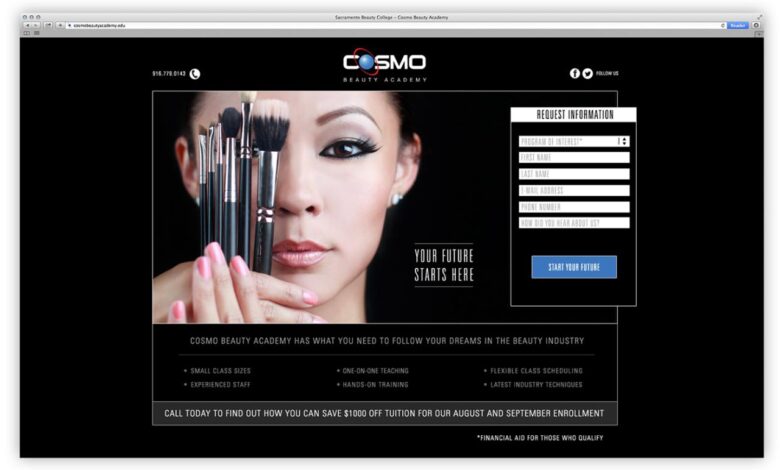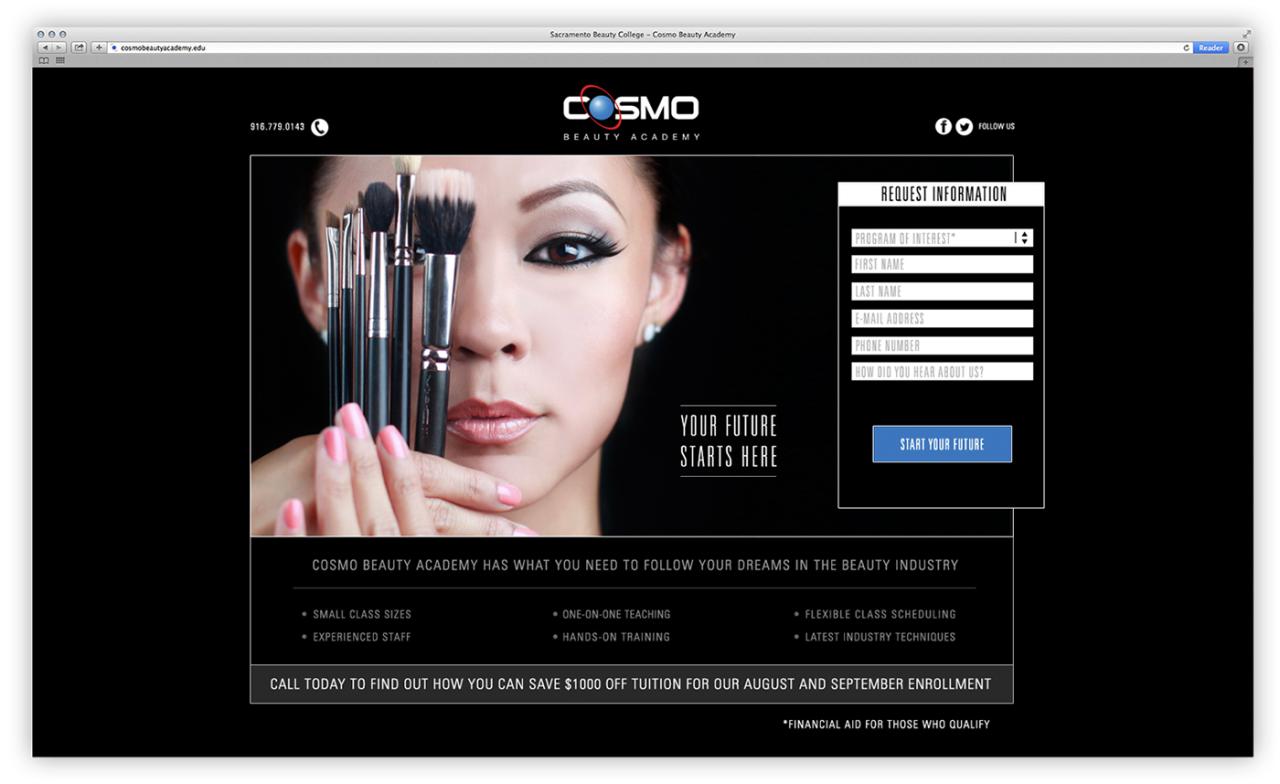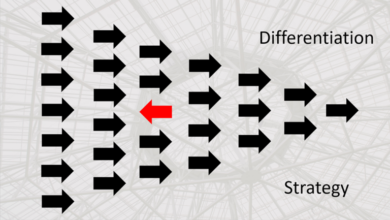
The Ultimate Guide to Pandora Advertising A Deep Dive
The ultimate guide to pandora advertising provides a comprehensive look at advertising on Pandora, from its unique features to successful campaign strategies. We’ll explore the platform’s history, current landscape, and emerging trends, covering everything from targeting strategies to creative ad concepts, and finally, measuring the effectiveness of your ads. Get ready to unlock the secrets to maximizing your return on investment on this popular audio platform.
This guide will walk you through the ins and outs of Pandora advertising, equipping you with the knowledge to create compelling campaigns that resonate with listeners and drive meaningful results. We’ll cover the specifics of targeting, crafting engaging ads, and tracking performance metrics to optimize your campaigns for success.
Introduction to Pandora Advertising
Pandora advertising is a unique form of audio-based advertising that leverages the platform’s vast music library and personalized listening experience to connect with its target audience. It differs from traditional radio advertising by offering a more tailored approach, allowing advertisers to reach specific demographics and interests. Unlike generic radio ads, Pandora ads are woven into the listener’s curated music experience, creating a more engaging and less intrusive form of advertising.
This targeted approach, combined with the platform’s strong user engagement, makes it an attractive option for brands seeking to build brand awareness and drive conversions.Pandora advertising has evolved significantly since its inception. Early campaigns focused primarily on simple audio ads, leveraging the platform’s initial growth to reach a broad audience. As the platform matured, strategies shifted to incorporate more sophisticated targeting options, allowing advertisers to reach specific listener segments based on music preferences and other demographics.
The rise of data-driven marketing has further refined Pandora’s advertising capabilities, enabling advertisers to track campaign performance and optimize strategies for maximum impact.
Pandora Advertising Definition
Pandora advertising is a form of targeted audio advertising delivered through the Pandora platform. It utilizes the platform’s personalized music recommendations to reach specific listener segments based on their musical tastes and preferences. This unique approach creates a more engaging and less intrusive advertising experience compared to traditional radio or other digital audio formats. The platform’s strong user engagement and large listener base make it a powerful tool for brands seeking to connect with specific audiences.
History and Evolution of Pandora Advertising
Pandora’s early advertising strategies focused on simple audio ads, leveraging the platform’s popularity to reach a wide audience. As the platform grew and evolved, strategies became more sophisticated, enabling targeted advertising based on listener preferences and demographics. The integration of data-driven marketing allowed for more precise targeting, enabling advertisers to measure campaign performance and optimize for better results.
The shift from broad reach to highly targeted campaigns is a key evolution in Pandora advertising, driven by the platform’s growing understanding of listener behavior and preferences.
Current Landscape of Pandora Advertising
The current Pandora advertising landscape is characterized by a strong focus on personalized and data-driven campaigns. Emerging trends include the use of interactive audio ads, which allow listeners to engage with the content in more dynamic ways. Challenges include the need to maintain a balance between targeted advertising and listener experience, ensuring that ads remain relevant and engaging without being intrusive.
The competitive landscape also presents challenges, demanding that advertisers adapt to stay ahead of the curve in this rapidly evolving advertising space.
Advertising Formats on Pandora
Pandora offers a variety of advertising formats to cater to different campaign objectives. Audio ads are a cornerstone, featuring various lengths and styles. Display ads are also available, allowing brands to integrate visual elements into the listener experience. The platform also offers interactive experiences, providing opportunities for listeners to engage directly with the ads and learn more about the advertised products or services.
This flexibility allows advertisers to select formats best suited to their campaigns.
Types of Campaigns on Pandora
Several types of campaigns can be run on Pandora, each designed to achieve different objectives. Awareness campaigns focus on increasing brand visibility and recognition within a specific target demographic. Conversion campaigns aim to drive direct action, such as website visits or purchases. Engagement campaigns are focused on creating interactive experiences to build stronger relationships with listeners. The choice of campaign type depends on the advertiser’s specific goals and target audience.
Targeting Strategies for Pandora Ads

Pandora’s advertising platform excels at connecting advertisers with highly engaged listeners. Understanding the intricacies of Pandora’s targeting strategies allows marketers to precisely reach their ideal audience, maximizing ad campaign effectiveness. This detailed look into Pandora’s targeting methods will equip you with the knowledge to craft highly personalized ad experiences and significantly improve your return on investment.Pandora leverages a robust system of data points to segment its vast listener base, allowing advertisers to tailor their messages to specific demographics and preferences.
This meticulous approach ensures that ads are not only seen but also resonate with the intended audience, ultimately boosting campaign performance.
Pandora’s Targeting Methods
Pandora employs sophisticated methods to identify and target specific listener segments. These methods range from utilizing listener listening habits to employing detailed demographic data, creating a powerful tool for advertisers. Pandora’s targeting methods enable a nuanced approach to advertising, moving beyond broad demographics and into the realm of individual listener preferences.
Key Data Points for Audience Segmentation
Pandora gathers a wealth of data to create detailed listener profiles. This includes, but is not limited to, musical preferences, listening habits, and demographics. This data allows for highly granular targeting, ensuring that ads reach listeners who are most likely to be interested in the advertised product or service. For instance, someone who frequently listens to jazz music in the evenings is a different listener than someone who primarily listens to pop music during their commute.
- Musical Preferences: Pandora’s vast music library allows for detailed analysis of listening patterns. This analysis reveals not just the genres a listener enjoys but also specific artists, albums, and songs, creating a deep understanding of individual musical tastes.
- Listening Habits: Pandora tracks listening frequency, duration, and time of day. This data is invaluable in understanding when and how often a listener engages with music, providing valuable insights into listener behavior and enabling the development of highly targeted ad placements.
- Demographics: Pandora gathers data on age, location, gender, and other demographic information to further refine listener profiles. This information enables advertisers to target specific age groups, geographical regions, or gender preferences, allowing for a precise reach.
Creating Personalized Advertising Experiences
Crafting personalized advertising experiences on Pandora requires a deep understanding of listener segments. Tailoring ad copy to resonate with the specific interests of the listener group is paramount to success. The key is to understand what makes that listener segment unique and what motivates them.
Comparing Pandora’s Targeting Capabilities with Other Audio Platforms
Pandora’s targeting capabilities are robust, but other audio platforms are also making significant strides. While Pandora excels in understanding musical preferences, other platforms may emphasize other demographic aspects or listening contexts. The strength of Pandora’s targeting lies in its intricate combination of musical taste and listening behavior data.
| Platform | Targeting Options | Data Used | Example Targeting Criteria |
|---|---|---|---|
| Pandora | Musical preferences, listening habits, demographics | Genre, artist, song, time of day, location, age, gender | Listeners who frequently listen to indie rock music between 6 PM and 9 PM in the San Francisco Bay Area |
| Spotify | Demographics, listening history, playlists, interests | Age, location, listening history, playlist membership, searched s | Users who have saved songs from Taylor Swift and also listen to podcasts about technology |
| Amazon Music | Music preferences, listening habits, Amazon account data | Genre, artist, song, listening frequency, purchase history, Amazon Prime membership | Customers who have purchased albums from a specific artist and live within a 50-mile radius of a store location |
Tailoring Ad Messaging
Effective ad messaging on Pandora is crucial. Advertisers should understand the specific musical tastes of the targeted listener segments and tailor their ad copy accordingly. A generic ad about a new car will likely fail to resonate with a listener deeply immersed in jazz music.
Creative Strategies for Pandora Ads
Pandora’s audio ads offer a unique opportunity to engage listeners in a meaningful way. Moving beyond mere product announcements, effective ads need to weave a narrative, evoke emotion, and seamlessly integrate with the listening experience. This section delves into crafting compelling audio ads that resonate with Pandora’s diverse audience.Effective audio ads for Pandora should not just be heard, they should be experienced.
So, you’re diving into the ultimate guide to Pandora advertising? Great! Knowing how to demonstrate the return on investment (ROI) of your SEO efforts is crucial, like this comprehensive guide on how to prove the value of SEO. Understanding the metrics behind your Pandora campaigns will be essential to show the real impact of your strategy, and this guide will help you do just that.
Ultimately, this guide will arm you with the knowledge to make your Pandora advertising truly shine.
They should tell a story, evoke an emotion, and leave a lasting impression on the listener. By leveraging the power of music and sound design, Pandora ads can move beyond simple product placement to become an integral part of the listener’s journey.
Compelling Storytelling in Audio Ads
Effective storytelling in audio ads is crucial for capturing and maintaining listener attention. Ads that tell a story, even a brief one, create a deeper connection with the audience. A well-structured narrative can elevate a simple product announcement into a memorable experience.
- Example 1: A local coffee shop could narrate a story about a busy morning rush, highlighting the comforting aroma and taste of their coffee, leading into a subtle mention of their new seasonal blend. This evokes a sense of familiarity and desire.
- Example 2: A travel agency could describe a picturesque scene from a faraway destination, emphasizing the beauty and tranquility. This could subtly integrate information about a special offer on a specific tour, seamlessly blending storytelling with promotion.
Integrating Music and Audio for Engagement
Music is Pandora’s core offering. Utilizing music strategically within audio ads can significantly enhance listener engagement. The selection of music, sound effects, and voiceovers should complement the narrative and reinforce the message.
- Strategy 1: Using music that evokes the feeling or atmosphere of the story or product. If the ad is about a relaxing spa day, use calming music in the background. If it’s about a vibrant city, use upbeat, energetic music. This subtle integration of music can heighten the emotional impact of the ad.
- Strategy 2: Using sound effects that enhance the narrative. A car commercial could incorporate the sounds of an engine starting, wind whistling, and a smooth gear shift. This multi-sensory experience can make the ad more immersive and memorable.
Ad Placement for Maximum Impact
Ad placement within the Pandora platform is critical. Understanding the context in which the ad appears significantly impacts its effectiveness. Placing ads within relevant playlists, genres, or shows ensures a higher level of listener relevance.
- Strategic Placement: Placing a fitness equipment ad during a workout playlist creates a highly targeted and effective opportunity for engagement. The listener is already predisposed to the product category.
- Contextual Relevance: An ad for a new restaurant should appear in playlists associated with cooking shows, or genres like jazz or blues, if the restaurant has a specific theme.
Key Elements of a Successful Pandora Audio Ad
Crafting a concise and impactful audio ad requires careful consideration of several key elements. Brevity, clarity, and emotional connection are paramount.
- Brevity: Audio ads on Pandora should be concise. A 15-second ad should effectively communicate the key message without overwhelming the listener. The average attention span is limited, so impactful ad copy should be crafted within this constraint.
- Clarity: The message of the ad should be easily understood. The ad should immediately convey the core value proposition of the product or service.
- Emotional Connection: Connecting with the listener on an emotional level is crucial for lasting impressions. Humor, nostalgia, or excitement can be effective ways to build emotional connection.
Ad Concept Series
A series of ad concepts highlighting different aspects of ad effectiveness on Pandora are presented below.
| Ad Concept | Focus | Example |
|---|---|---|
| Concept 1: Themed Playlist Integration | Showcase a product or service by integrating it into a relevant Pandora playlist. | A new fitness tracker ad integrated into a motivational running playlist. |
| Concept 2: Emotional Storytelling | Emphasize emotional connection through a short, compelling story. | A travel agency ad narrating a picturesque scene from a destination, culminating in an offer for a vacation package. |
| Concept 3: Music-Driven Engagement | Use music and sound effects to enhance the experience and draw listeners in. | A new coffee shop ad using a background track that evokes a sense of comfort and warmth, subtly highlighting the aroma and taste of their coffee. |
Measuring the Effectiveness of Pandora Ads
Understanding the return on investment (ROI) of your Pandora advertising campaigns is crucial for optimizing future spending and maximizing results. Accurate measurement allows you to fine-tune targeting, creative, and ad formats to drive greater engagement and conversions. This section delves into the key metrics used to assess the performance of Pandora ads, enabling you to make data-driven decisions.Pandora offers a range of metrics to evaluate the success of your advertising campaigns.
Understanding these metrics allows you to track performance, identify areas for improvement, and demonstrate the value of your ad spend.
Key Metrics for Pandora Ad Performance
Understanding the relationship between different metrics is essential for a comprehensive analysis. Ad impressions, clicks, and conversions are interconnected; a high volume of impressions doesn’t automatically translate into conversions, but they are crucial steps in the process.
- Ad Impressions: The number of times your ad was displayed to a listener. This is a crucial initial measure of ad visibility and reach. A high impression count demonstrates your ad’s potential for exposure but needs to be correlated with other metrics to show its effectiveness.
- Clicks: The number of times listeners clicked on your ad. This directly measures user engagement with your advertisement, indicating interest and intent to learn more about your offering.
- Conversion Rate: The percentage of clicks that result in a desired action, such as a website visit, app download, or purchase. This is a critical metric for assessing the effectiveness of your ad in driving conversions. A high conversion rate signifies the ad’s ability to convert interested listeners into customers.
- Cost Per Click (CPC): The amount you pay for each click on your ad. A low CPC indicates efficiency in your ad spend. Monitoring CPC alongside click-through rate (CTR) is crucial to understand the cost-effectiveness of your targeting and creative strategies.
- Click-Through Rate (CTR): The percentage of impressions that resulted in a click. A higher CTR suggests that your ad copy and targeting are compelling enough to encourage listener interaction.
- Engagement Metrics: Pandora provides data on how long listeners interacted with your ads, such as average listening time. This helps evaluate the impact of your creative on user attention and interest.
Tracking Ad Format and Targeting Performance
Different ad formats and targeting strategies may have varying degrees of effectiveness. Analyzing the performance of each allows you to optimize your approach. For example, a video ad might generate more engagement than a static banner ad, depending on the target audience and the creative itself.
- Segmentation Analysis: Break down performance data by target audience segments (e.g., age, location, interests). This helps determine which segments respond most favorably to your ads. For example, an ad targeting a younger demographic might see a higher click-through rate than one aimed at an older demographic, if the ad is more appealing to the younger demographic.
- A/B Testing: Experiment with different ad creatives (images, text, videos) and targeting options to see which perform better. This iterative approach is crucial to optimize ad performance and improve conversion rates. For example, testing two different ad copy variations can identify which copy performs better in driving clicks.
- Ad Format Comparison: Evaluate the performance of different ad formats (e.g., audio, video, display). This can help you allocate your budget strategically based on the most effective format for your campaign goals. For example, a video ad format might result in higher listener engagement compared to a static display ad.
Campaign Data Analysis Framework
Analyzing campaign data is a continuous process, requiring ongoing monitoring and adjustments. This process allows for adjustments to improve the performance of future campaigns.
- Performance Reporting: Regularly review performance reports to identify trends and patterns. Understanding these trends helps you understand the effectiveness of your ad spend.
- Data Visualization: Employ data visualization tools to present complex data in a clear and understandable way. Visualizing data allows you to quickly identify key insights and areas for improvement.
- Hypothesis Testing: Formulate hypotheses about which elements of your campaign are driving results. Test these hypotheses through experimentation to refine your strategy. For example, you might hypothesize that a specific targeting demographic is more likely to click on your ad, and testing that hypothesis will reveal the true performance of the target.
Assessing Listener Engagement with Pandora Ads
Understanding listener engagement with your Pandora ads is key to determining campaign success. Beyond clicks, consider the time spent interacting with the ad.
- Engagement Duration: Analyze the average duration listeners spend interacting with your ad. This provides insights into how compelling your ad is and whether it captures listener attention. A longer engagement duration suggests a higher degree of interest and engagement.
- Ad Skip Rates: Track the percentage of listeners who skip your ad. A high skip rate suggests that your ad may not be engaging enough or relevant to the listener. Analyzing ad skip rates is vital for understanding what resonates with listeners and what doesn’t.
Relationship Between Impressions, Clicks, and Conversions
Ad impressions are the starting point, representing potential exposure. Clicks indicate listener interest, and conversions signify successful outcomes. A high volume of impressions without clicks or conversions suggests a need to re-evaluate your ad targeting and creative.
| Metric | Description | Target Value | Measurement Method |
|---|---|---|---|
| Ad Impressions | Number of times ad displayed | High | Pandora’s reporting dashboard |
| Clicks | Number of clicks on the ad | High | Pandora’s reporting dashboard |
| Conversion Rate | Percentage of clicks leading to desired action | High | Pandora’s reporting dashboard, tracking conversions in external systems |
| CPC | Cost per click | Low | Pandora’s reporting dashboard |
| CTR | Percentage of impressions resulting in clicks | High | Pandora’s reporting dashboard |
| Engagement Duration | Average time spent interacting with ad | High | Pandora’s reporting dashboard |
Pandora Advertising Best Practices
Pandora’s advertising platform offers a unique opportunity to connect with a dedicated audience. Understanding the best practices for creating impactful ads is crucial for maximizing return on investment. This section delves into key strategies, emphasizing adherence to Pandora’s guidelines and successful campaign examples.Effective Pandora ads go beyond simply broadcasting messages; they engage listeners and foster a positive association with the advertised brand.
So, you’re diving deep into the ultimate guide to Pandora advertising? Great! Understanding how to maximize your campaigns is key, and a crucial component of that is boosting conversions. Recent research shows a significant CRO revenue increase one week cro revenue increase one week by implementing specific strategies. Ultimately, mastering Pandora’s advertising landscape involves meticulous attention to detail, and this guide will equip you with the tools to achieve just that.
A deep understanding of listener preferences and market trends is paramount to creating advertisements that resonate. This approach, coupled with a strong ethical framework, ensures sustainable success for both advertisers and Pandora’s user base.
Adherence to Pandora’s Advertising Guidelines and Policies
Pandora maintains clear guidelines to ensure a positive user experience. Adhering to these policies is essential for maintaining advertiser credibility and avoiding penalties. These guidelines encompass content restrictions, technical specifications, and acceptable ad formats. Advertisers must comply with all stipulations to ensure campaigns run smoothly and maintain a positive relationship with the platform.
Creating Engaging and Effective Ads
Pandora’s platform caters to a diverse audience, demanding advertisements that resonate with various tastes and preferences. Creating effective ads requires a deep understanding of the listening experience. Ads should be concise, engaging, and seamlessly integrated into the audio environment, avoiding disruptions to the listening flow. High-quality audio and creative copy that aligns with Pandora’s branding are crucial.
Successful Pandora Advertising Campaign Examples
Several successful campaigns have demonstrated effective strategies. One notable example leveraged targeted advertising based on listener demographics, resulting in a significant increase in brand awareness and conversions. Another campaign focused on creating a memorable jingle, successfully embedding the brand into the listener’s auditory memory. These campaigns illustrate the importance of tailoring ads to the specific Pandora user base.
Successful campaigns often feature catchy hooks, relevant content, and seamless integration with the platform.
Adapting to Listener Feedback and Market Trends
The advertising landscape is constantly evolving. Staying attuned to listener feedback and market trends is vital for maintaining relevance. Monitoring listener reactions to ads through analytics and feedback mechanisms can help identify areas for improvement and allow advertisers to adapt campaigns in real time. For example, advertisers can adjust messaging based on emerging trends or concerns expressed by listeners.
Want to unlock the secrets of Pandora advertising? A solid understanding of the platform is key. Beyond that, mastering your YouTube live streaming setup, like the one detailed in this helpful guide, youtube live streaming setup go live successfully , can significantly boost your reach and engagement. This, in turn, is a powerful tool for amplifying your Pandora ads and maximizing your return on investment.
Ultimately, the ultimate guide to Pandora advertising will help you navigate the complexities of this platform.
By actively monitoring and responding to feedback, advertisers can maintain a positive brand image.
Legal and Ethical Considerations for Pandora Advertising
Advertisers must be mindful of legal and ethical considerations when running campaigns on Pandora. This includes complying with all relevant advertising regulations, avoiding misleading or deceptive practices, and ensuring accurate and honest representations of the advertised product or service. Respecting listener preferences and avoiding harmful content are also critical ethical considerations.
Key Considerations for a Successful Pandora Ad Campaign
Adherence to Pandora’s advertising policies is paramount for campaign success.
A clear understanding of the target audience is essential for crafting effective messaging.
Ensuring high-quality audio and creative execution is crucial for audience engagement.
Monitoring campaign performance and adapting to feedback and market trends are vital for optimization.
Ethical considerations, including accuracy and transparency, are crucial for maintaining a positive brand image.
Case Studies of Pandora Advertising Success: The Ultimate Guide To Pandora Advertising

Pandora’s platform, with its unique blend of audio content and targeted advertising, has proven fertile ground for successful campaigns. Brands have leveraged Pandora’s sophisticated user data to achieve significant results, often exceeding expectations in brand awareness and listener engagement. Understanding these successful strategies can provide valuable insights for advertisers looking to maximize their reach and impact on the platform.Successful campaigns on Pandora often hinge on understanding the specific listener demographics and tailoring messaging to resonate with those audiences.
By focusing on delivering relevant and engaging content, advertisers have been able to foster a positive association between their brand and the Pandora experience. This, in turn, translates into increased brand recognition and potentially higher conversion rates.
Strategies for Reaching Specific Audiences
Pandora’s ability to target specific listener demographics is a key driver of its success. Understanding the tastes and preferences of different user segments allows advertisers to tailor their messaging to resonate with each group. For example, a fitness apparel company might focus their advertising on Pandora stations known for upbeat, motivating music, reaching listeners who are likely to be active and interested in fitness.
Conversely, a luxury car manufacturer might utilize Pandora’s curated stations focused on sophisticated music genres, appealing to a more affluent audience. This precise targeting significantly improves the chances of reaching the right audience and maximizes the return on advertising investment.
Measuring Campaign Effectiveness
The success of a Pandora advertising campaign is evaluated through a multifaceted approach, examining various key performance indicators (KPIs). Tracking metrics such as impressions, listener engagement, and click-through rates provides valuable insights into campaign performance. The ability to analyze these metrics allows advertisers to make data-driven adjustments to optimize campaign strategies in real time.
Impact on Brand Awareness and Customer Engagement
Successful campaigns demonstrate a clear link between Pandora advertising and improved brand awareness. By effectively engaging listeners with relevant content, advertisers can create a positive association between their brand and the platform. This can translate into increased brand recognition and higher customer engagement. Positive listener experiences, driven by effective messaging and content, are crucial in achieving long-term success.
Examples of Successful Campaigns
- A travel agency leveraged Pandora’s targeting options to advertise their tours to listeners on specific music stations associated with adventurous travel and exploration. They used catchy jingles and concise descriptions of their tours within the ad spots. The campaign generated a significant increase in website traffic and bookings, demonstrating the power of targeted advertising. Metrics like click-through rates and conversion rates were key indicators of the campaign’s success.
- A coffee shop chain advertised their new seasonal drink line on Pandora stations associated with cozy evenings and relaxed activities. The campaign featured short audio clips of the drink descriptions, highlighting unique flavors and special ingredients. The campaign generated a substantial increase in foot traffic to the coffee shops, showcasing the potential of audio-based advertising to drive physical store engagement.
Comparison of Strategies
Different brands employ various strategies on Pandora, reflecting their unique marketing goals and target audiences. Some focus on simple, memorable jingles, while others utilize more sophisticated narratives woven into their ads. The effectiveness of each approach depends on factors like the brand’s identity, the campaign’s objectives, and the target audience. A careful evaluation of these elements helps brands determine the most suitable strategy.
Metrics of Success
Successful campaigns on Pandora are often characterized by significant increases in metrics such as impressions, listener engagement, and click-through rates. Furthermore, conversion rates and website traffic often serve as reliable indicators of a successful campaign’s impact. Analyzing these metrics helps understand the campaign’s return on investment (ROI) and identifies areas for improvement.
Future Trends in Pandora Advertising
Pandora, a pioneer in the streaming audio space, is poised for continued growth by adapting to the ever-evolving landscape of listener preferences and emerging technologies. This evolution necessitates a proactive approach to advertising strategies, recognizing the potential for innovative and impactful campaigns. The future of Pandora advertising hinges on embracing emerging technologies, understanding shifting listener behaviors, and developing innovative ad formats.Pandora’s ability to leverage data and technology to create tailored ad experiences will be crucial.
AI and machine learning will play a significant role in optimizing ad placement, targeting, and ultimately, listener engagement.
Integration of New Technologies
Pandora is well-positioned to integrate emerging technologies like augmented reality (AR) and virtual reality (VR) into its platform. AR and VR experiences could create immersive advertising opportunities that transcend the traditional audio-only format. Imagine an ad for a new car dealership that allows listeners to virtually explore the showroom through AR overlays within the Pandora app. This immersive approach could substantially enhance user engagement and brand recall, moving beyond simple audio ads.
Impact of AI and Machine Learning, The ultimate guide to pandora advertising
AI and machine learning can significantly improve Pandora’s advertising capabilities. These technologies can analyze vast amounts of listener data, including listening history, demographics, and preferences, to deliver highly targeted ads. This precision targeting not only increases the effectiveness of advertising campaigns but also provides a more personalized listening experience for users. Personalized ad recommendations, tailored to individual listener profiles, can enhance listener satisfaction and brand connection.
This personalized approach can differentiate Pandora from competitors who might rely on more generic advertising strategies.
Evolving Listener Preferences and Behaviors
Listener preferences are continuously evolving, driven by factors like the rise of podcasts and short-form audio content. Understanding these shifts is critical for developing effective advertising strategies. Pandora must adapt its ad formats and content to remain relevant and engaging to its audience. For example, incorporating interactive elements, such as polls or quizzes, within ads could enhance engagement and create a more dynamic listening experience.
Immersive and Interactive Advertising Experiences
The future of Pandora advertising may include immersive and interactive ad experiences. These experiences could go beyond traditional audio ads, incorporating elements of visual storytelling, interactive games, or even personalized soundtracks tailored to specific listener profiles. For instance, an ad for a new movie could feature short audio clips and visual elements triggered by certain song segments, allowing listeners to experience a taste of the film’s atmosphere.
This could be an innovative way to attract attention and build anticipation.
Pandora’s Adaptation to Future Technological Advancements
Pandora’s success in the future will depend on its ability to adapt to technological advancements. The company should invest in research and development to stay ahead of the curve and explore new technologies that enhance the listener experience. This includes experimenting with different ad formats, exploring emerging audio technologies, and remaining open to innovative approaches to personalized advertising.
For example, experimenting with interactive storytelling through audio, incorporating elements of gamification within ad campaigns, or partnering with other audio platforms to create cross-platform advertising opportunities are all potential strategies.
Conclusion
In conclusion, the ultimate guide to pandora advertising provides a robust framework for anyone looking to leverage Pandora’s platform for effective advertising. From understanding the nuances of targeting to crafting compelling creative strategies, this guide equips you with the tools and insights needed to succeed. Remember to stay updated on evolving trends and adapt your strategies to maintain a competitive edge in the ever-changing audio landscape.





